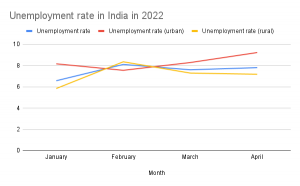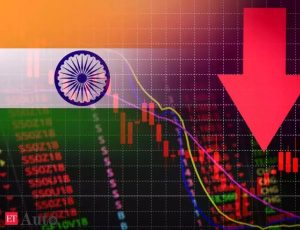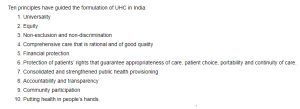OVERVIEW OF INDIA’S SOLAR SECTOR
THE CONTEXT: India promised to install 100 gigawatts of solar power by 2022. But the country will not be able to deliver on this climate pledge. According to a new report, India will miss this target by 27%. Also, India is likely to miss its solar energy target of 300 GW (gigawatt) for 2030 by around 86 GW, a new report by the Institute for Energy Economics and Financial Analysis (IEEFA) and JMK Research. In this context, this article analyzes the present scenario of the Solar energy sector in India.
WHAT DOES THE REPORT SAY?
- As of April, only about 50% of the 100GW target, consisting of 60GW of utility-scale and 40GW of rooftop solar capacity, has been met.
- Nearly 19 GW of solar capacity is expected to be added in 2022 — 15.8GW from utility-scale and 3.5GW from rooftop solar. Even accounting for this capacity would mean about 27% of India’s 100GW solar target would remain unmet.
- A 25GW shortfall in the 40GW rooftop solar target is expected compared to 1.8GW in the utility-scale solar target by December 2022. Thus, it is in rooftop solar that the challenges of India’s solar-adoption policy stick out.
REASONS FOR MISSING INDIA’S SOLAR ENERGY TARGET
- In its early years, India’s rooftop solar market struggled to grow, held back by lack of consumer awareness, inconsistent policy frameworks of the Centre/ State governments, and financing. Recently, however, there has been a sharp rise in rooftop solar installations thanks to falling technology costs, increasing grid tariffs, rising consumer awareness, and the growing need for cutting energy costs.
- Other Factors impeding rooftop-solar installation include:
- Pandemic-induced supply chain disruption to policy restrictions.
- Limits to net-metering (or paying users who give back surplus electricity to the grid). Regulatory roadblocks.
- Taxes on imported cells and modules, unsigned power supply agreements (PSAs) and banking restrictions; financing issues plus delays in or rejection of open access approval grants; and the unpredictability of future open access charges.
OVERVIEW OF INDIA’S RENEWABLE ENERGY SECTOR
- At COP26 in Glasgow, our prime minister announced 500 gigawatts (GW) of non-fossil fuel capacity and 50% of energy from renewable sources by 2030, coupled with a net-zero target by 2070.
- Presently, India has installed 152.90 GW of renewable energy capacity projects (including large hydro) until February. It includes 50.78 GW from solar power, 40.13 GW from wind power, 10.63 GW from Bio-power, 4.84 GW from small hydropower, and 46.52 GW from large hydropower.
IMPORTANCE OF SOLAR ENERGY FOR INDIA
- India’s share of global energy demand is predicted to double to 11% in 2040, making it imperative to enhance energy security and self-sufficiency in power generation without increasing environmental costs.
- This increase in power demand is likely to increase India’s reliance on coal, oil, and natural gas as a source of energy. However, additional imports of oil and increased domestic production of coal will fall short of energy demand and entail economic and environmental costs.
- These are likely to hit harder than anticipated in an economy ravaged by COVID-19. Expansion of solar power units and increased reliance on solar power allows India to enhance energy security in the face of rising demand.
- India is dealing with an aggressive air pollution problem. In 2020, Delhi’s Air Quality Index (AQI) stood at 328, indicating severe pollution. Solar production does not cause any toxic emissions and can help mitigate the pollution caused by fossil fuel usage.
- India is likely to face increasing water security issues and thus must shift to energy sources that don’t rely extensively on water. The groundwater levels in India declined by 61% between 2007 and 2017, with the majority of this water being used for irrigation. This is a major red flag for coal production which relies heavily on water for steam production and cooling. Solar power is neither dependent on groundwater supplies nor does it strain them.
WHAT IS INDIA’S SOLAR POLICY?
SOLAR ROOFTOP SCHEME: Under the rooftop scheme executed by SECI (Solar Energy Corporation of India), 200 MW of projects has been allocated. SECI launched a tender that is the largest global one offering a 30% subsidy to the residential sector, private not-for-profit educational organizations, social sector, and the health institutions.
SOLAR PARK SCHEME: Parks to facilitate the creation of infrastructure required to set up new solar power projects in terms of land allocation, transmission, access to roads, availability of water, etc. MNRE has come up with a scheme to set up a number of solar parks across several states, each with a capacity of almost 500 MW. The Scheme proposes to offer financial support by the Government of India to establish solar
SOLAR ENERGY SUBSIDY SCHEME: Under this Scheme, financial assistance and capital subsidy will be provided to the applicant to the extent of 50 percent, 75 percent, and 90 percent of the basis of the basic cost of the solar energy plant. The Government Yojana explains that a person is eligible for a subsidy if he has solar panels installed on the rooftop. The subsidy is decided as per the capacity of the solar power plant.
PRADHAN MANTRI- KISAN URJA SURAKSHA EVAM UTTHAAN MAHABHIYAN: It Aims to provide financial and water security to farmers through harnessing solar energy capacities of 25,750 MW by 2022. Solarisation of water pumps is a step in distributed power provided at the consumer’s doorstep.
THE JAWAHARLAL NEHRU NATIONAL SOLAR MISSION (JNNSM): The Jawaharlal Nehru National Solar Mission (JNNSM), also known as the National Solar Mission (NSM), which commenced in January 2010, marked the government’s first focus on promoting and developing solar power in India.
GROWTH OF THE SOLAR SECTOR: Since 2011, India’s solar sector has grown at a compounded annual growth rate (CAGR) of around 59% from 0.5GW in 2011 to 55GW in 2021.
RANKING OF INDIA: India currently ranks fifth after China, the U.S., Japan, and Germany in terms of installed solar power capacity.
PRESENT STATUS: As of December 2021, India’s cumulative solar installed capacity is 55GW, which is roughly half the renewable energy (RE) capacity (excluding large hydropower) and 14% of India’s overall power generation capacity. Within the 55GW, grid-connected utility-scale projects contribute 77% and the rest comes from the grid-connected rooftop and off-grid projects.
What should be done to achieve the targets?
- The need for focused, collaborative, and goals-driven R&D to help India attain technology leadership.
- The need for better financing infrastructure, models, and arrangements to spur the PV industry and consumption of PV products.
- Training and development of human resources to drive industry growth and PV adoption.
- With solar panels and solar systems getting more efficient vs their earlier generation, customers are wanting to invest in a technology that is getting them better output per square meter of the space they have.
- So there is a constant need to invest in research & development of a more efficient solar ecosystem involving energy storage systems. Like sharks, bifacial panels generate electricity from both the front and back of the solar panel.
- As India is making strides to fulfill its solar dream, Loom Solar and its smart methodologies shall continue to provide the Indian solar industry with much-needed assistance for ‘Mission 2030’.
SCOPE OF INDIA’S SOLAR SECTOR
- The generation of solar energy has tremendous scope in India. India being a tropical country, receives solar radiation throughout the year. With 3,000 hours of sunshine, this is equal to more than 5,000 trillion kWh of solar radiation per square meter.
- India has vast solar potential; it is a lucrative opportunity for entrepreneurs to start a solar business in India. With the growing economy, India’s power consumption is going to rise, so the solar energy business in India is the ideal way to manage the balance between economic growth and sustainable development.
- The government is constantly pushing and supporting the solar business in India through various programs and initiatives by enabling an increase in solar power at a subsidized cost.
THE CONCLUSION: Boosting solar capacity post-pandemic in a struggling economy will pose a whole new challenge. It will require innovative financing techniques and policies to bolster domestic production in the face of increasing environmental concerns.
Questions:
- Recently, as per a report, India has missed its solar target. Find out the causes and also suggest the measures for the same.
- It is imperative for India to achieve its solar energy target in the fight against climate change. Elaborate.

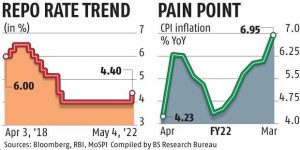


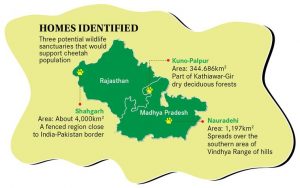
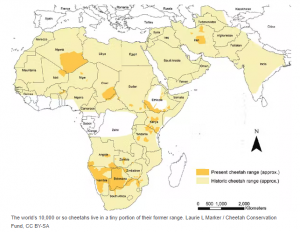

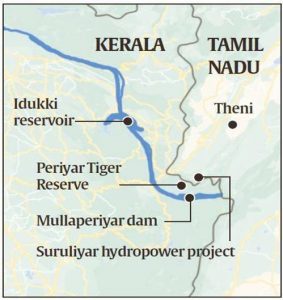
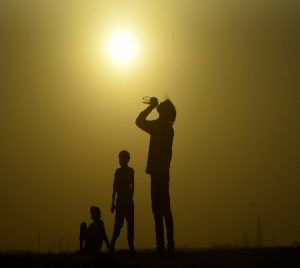
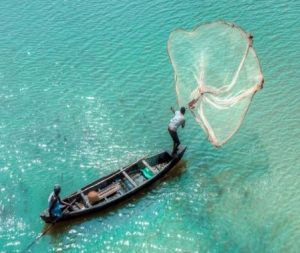

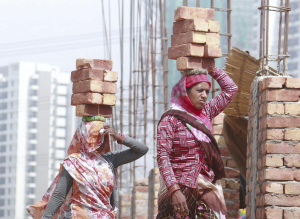
 THE EXPLANATION:
THE EXPLANATION: THE CONTEXT: India’s unemployment rate rose to 7.83% in April from 7.60% in March, according to the recent data released by the Centre for Monitoring Indian Economy (CMIE).
THE CONTEXT: India’s unemployment rate rose to 7.83% in April from 7.60% in March, according to the recent data released by the Centre for Monitoring Indian Economy (CMIE).